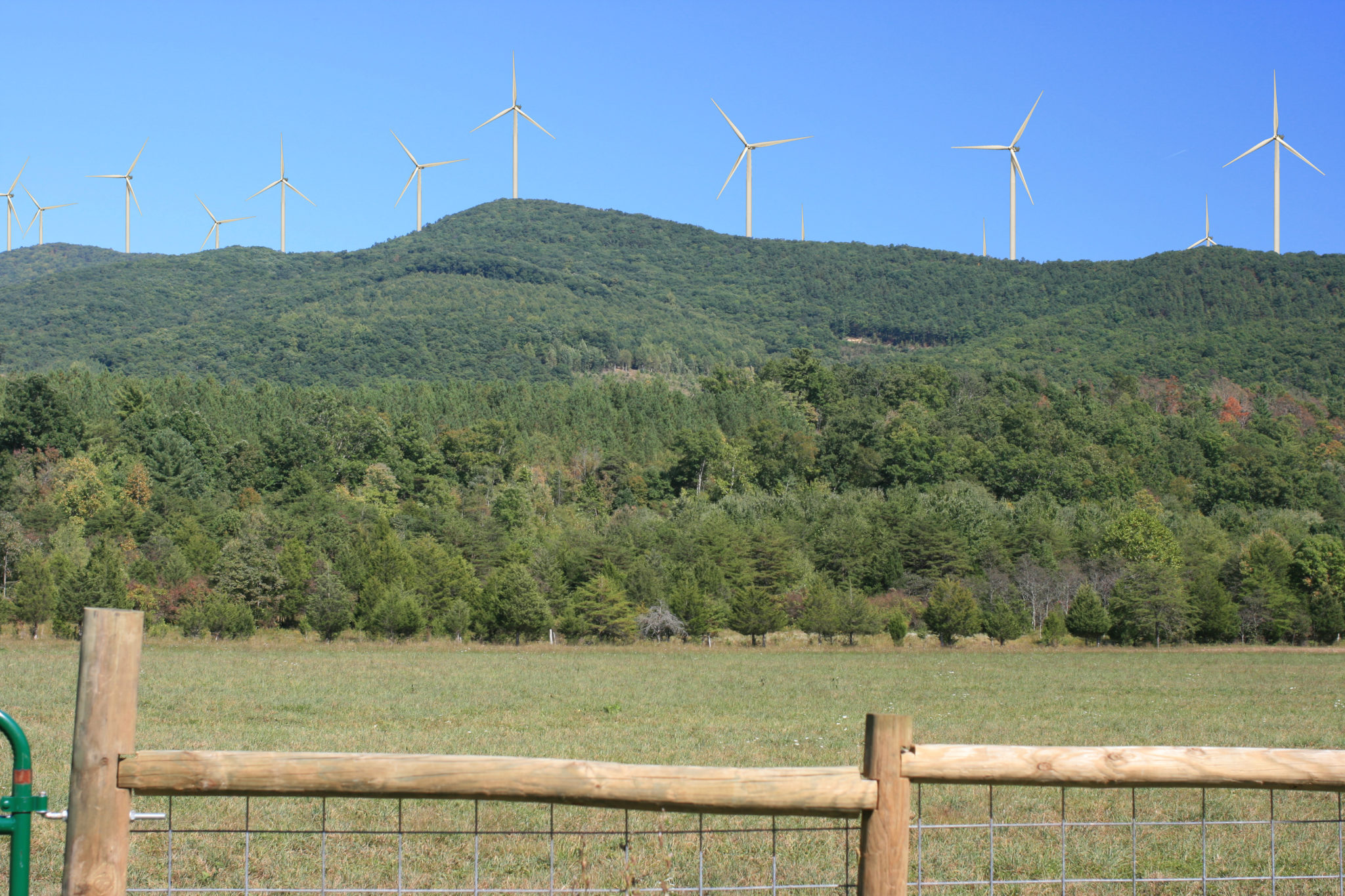Capitalizing on Complementary Resources
Rocky Forge Wind is a win-win for the Commonwealth’s electric grid and rural economic development.
Jerry Fraley points to a spot in the distance.
Across the mountaintop, if you squint a little, you can make out a thin tower reaching 60 meters in the air. The red and white meteorological tower, one of four, is gathering data, characterizing wind speed and direction, and transmitting everything for analysis about 100 miles away.

“This is the premiere spot for wind in Virginia,” says Fraley, gazing out over some of the 10,000-acre ranchland in Botetourt County he began purchasing back in the mid-1960s.
For more than a decade, Fraley has been working to harvest the area’s natural resource, a concept familiar to his family.
“I’m a third-generation coal miner and construction man,” Fraley says. “My family has been involved in the coal business, or energy business, for 100 years.”
But this project—a wind farm—is new, and not just to the Fraley family, but to the entire Commonwealth.
Rocky Forge Wind, fully permitted and ready to build, is poised to be the state’s first onshore wind farm.
Sustaining Southwest Virginia
Southwest Virginia, like many cross sections of rural America, has seen a substantial shift in its local economy. Coal production in the state has fallen by more than 70% from its peak in 1990. Once-bustling towns are seeking opportunities for revitalization.
Fraley, his father, and his grandfather lived and breathed the surge and then the decline of the region’s main source of economic opportunity—and with it, the community.
Now, this unlimited natural resource is offering a new chance to diversify the local economy.
“It’s a win-win for everyone,” says Fraley. “The county will receive substantial tax revenues from the project. They’re talking about spending the money on a new school.”
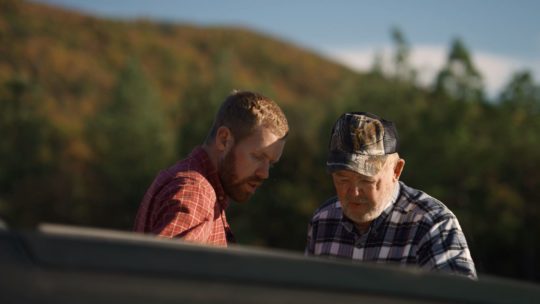
“This project had community support from the very beginning,” says Delegate Terry Austin, who represents the state’s 19th district. “The residents of Northern Botetourt welcomed and embraced it, came out and supported it in public meetings.”
In mountainous Botetourt County, population 33,000, investments as large as Rocky Forge come few and far between.
“There’s a lot of valuable real estate in the county that we’re unable to build on or develop otherwise because of its topography,” says Austin. “We are in a position in Southwest Virginia where economic development is crucial. We’re losing jobs, and our schools are declining in population. We need to find a means by which to sustain and grow our economy here, and Rocky Forge Wind creates that opportunity.”
A New Energy Plan
In 2018, the Virginia General Assembly took a crucial first step in recognizing and prioritizing projects like Rocky Forge Wind.
The legislature passed a law declaring more than 5,000 megawatts of new solar and wind to be in the public interest—a milestone that recognizes not only the environmental benefits of these technologies, but also the rural economic development opportunities that they offer.
Today, 144 private companies across the globe have committed to procuring 100% renewable energy. Those pledges are growing in number.
“This is a great time for this region to really strategize about the growth that is taking place,” says Sheri Winesett, executive director of the Botetourt County Chamber of Commerce, which has endorsed the wind project. “The development and use of new renewable energy sources contribute to the future growth and sustainability of the county.”
For Botetourt’s leaders, Rocky Forge represents something even greater than a construction boom, long-term maintenance jobs, and millions of dollars in tax revenue. Rocky Forge Wind is the catalyst for additional opportunities.
“Our support for Rocky Forge demonstrates that the county is corporate friendly,” says Austin. “It shows that we’re willing to work with other industries and corporations that are interested in coming in and investing in our community.”
Rocky Forge Wind would also fulfill a critical strategic requirement of a growing number of major corporations: sourcing renewable energy.
“The market, driven by customer demand, is heading toward clean energy,” says Tyson Utt, Apex Clean Energy’s vice president of development for eastern regions. “Access to renewable energy is often a key factor for corporations when deciding where to locate their facilities for future growth.”
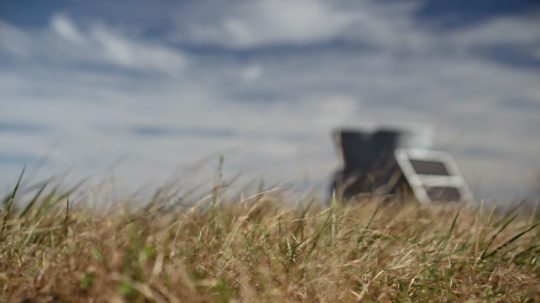
Today, 144 private companies across the globe have committed to procuring 100 percent renewable energy, including many with operations in the Commonwealth. Those pledges are growing in number, and in many cases are being accomplished ahead of schedule.
For example, Facebook’s new data center in Richmond will run entirely on clean power. The tech giant sealed the deal when Dominion created a new tariff program that makes renewable energy accessible to large energy users.
“Botetourt is very conscious of how we attract companies to this area to collaborate and build this region, and clean energy plays a role in that,” says Winesett. “Purchasing clean electricity helps businesses manage energy-related costs while also reducing environmental impact.”
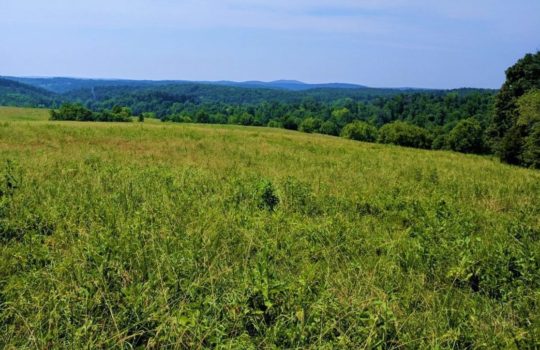
Enabling Virginia’s Economic Future, Today
Virginia’s new energy economy is now closer than ever to reality.
It was only a matter of time before the clean energy revolution materialized in the Commonwealth, a state endowed with a shining solar resource in the central region and gusty winds off the coast and in the southwest.
These natural resources—advantageously spread throughout the state and able to maximize benefits across different regions—are complementary for another reason too.
The sun shines the brightest and produces the most electricity in the summer, while the wind blows the hardest and produces the most power in the winter. Likewise, wind is more productive overnight and solar during the day.
“The two production profiles complement each other,” explains Utt. “By combining wind and solar, we’re producing the most balanced and diverse supply of electricity to meet the Commonwealth’s needs.”
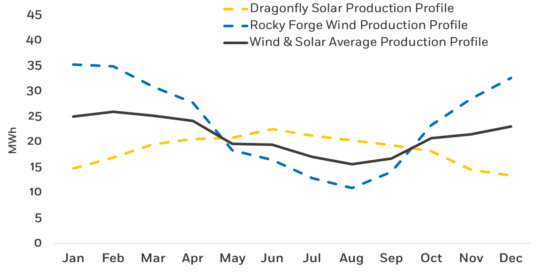
Rocky Forge now provides the opportunity to develop onshore wind as a crucial part of that diversified supply—a key factor in bringing resiliency to the electric grid.
Apex is developing $1 billion worth of renewable energy projects in the Commonwealth. With such strong resource capacity, Virginia will be more than a participant in the new energy economy—it can be a leader.
Apex alone is actively developing $1 billion worth of renewable energy projects within the Commonwealth. With such strong resource capacity, Virginia is set to be more than a participant in the new energy economy—it can be a leader.
Back in Botetourt County, Fraley gazes out across the lush mountain range as a breeze moves through the trees and tall grasses. More than a decade after signing onto the project, he’s eager to see turbines take root here and watch as his community leads the state’s clean energy revolution, shaping a future of growth and prosperity.
“Everybody has a little bit of hope now,” says Fraley.
Standing amid the vibrant Blue Ridge Mountains, it’s hard not to envision all the potential that lies in these hills.
For Fraley, Rocky Forge Wind brings the promise of environmental conservation and a new source of income—revenue that will ensure the viability of his property for generations to come.
For Botetourt, there’s optimism about economic development to come.
And for Virginia, long known as a great state for doing business, there’s the capacity to lead the East Coast in providing carbon solutions for the world’s most progressive corporations.
